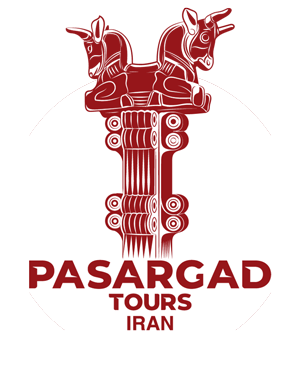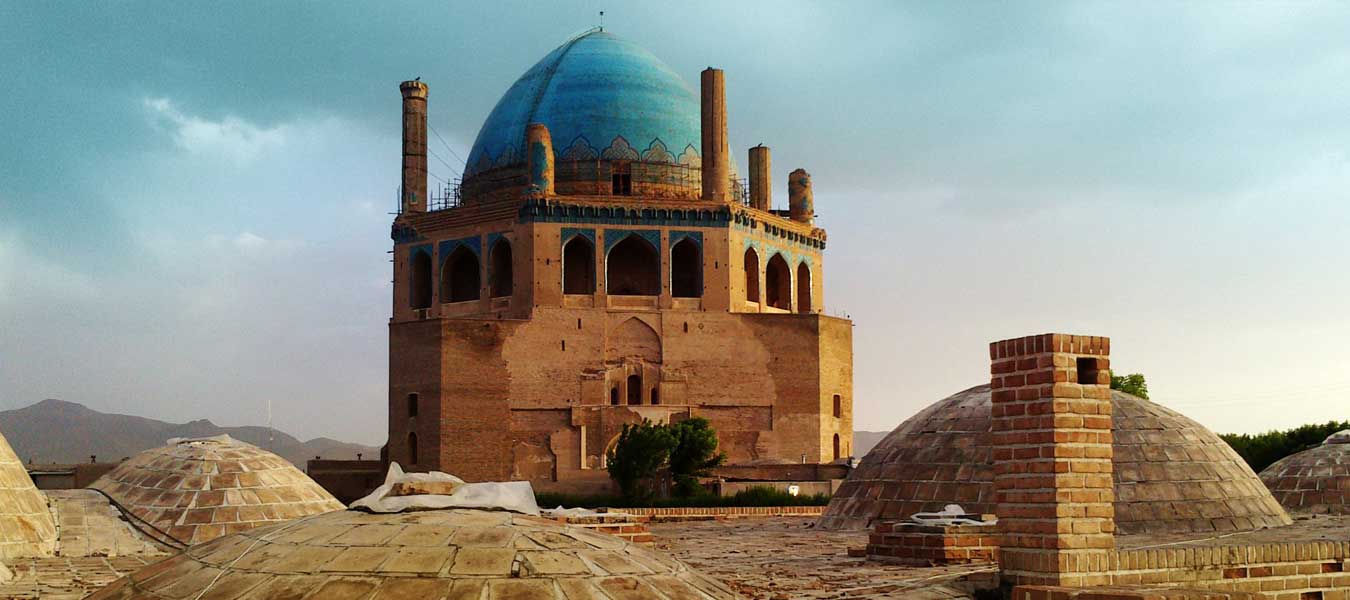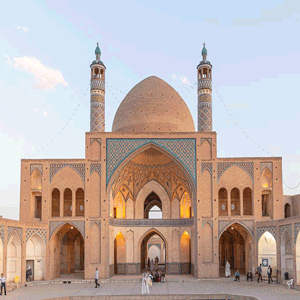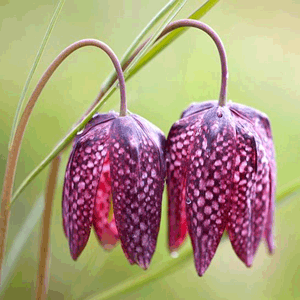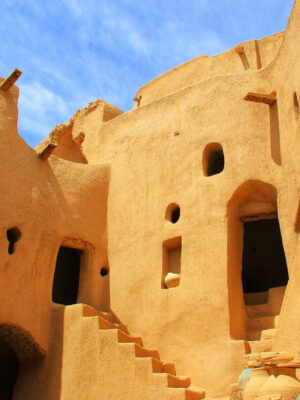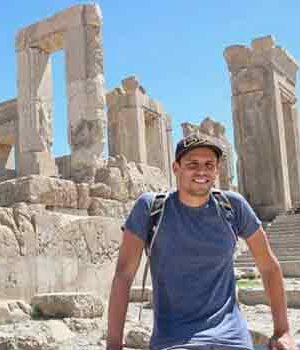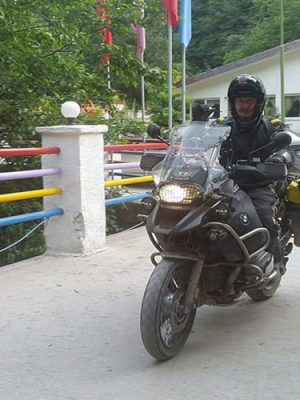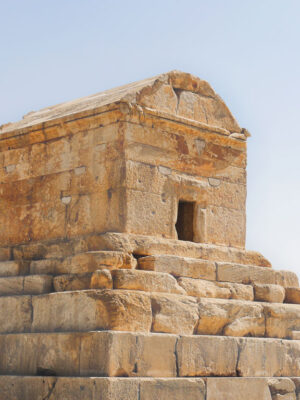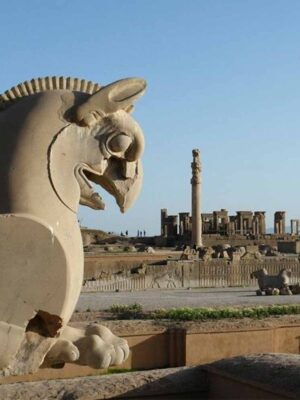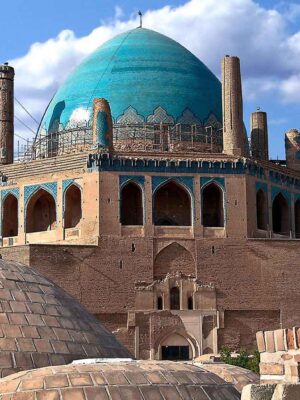Although there are no pre‐Seljuq era relics in Zanjan, it has been depicted as a prominent city in 10th century Islamic documents. Zanjan was also described as an old city with hospitable people in the journals of Clavijo, the 15th century Spanish traveler who spent a night in Zanjan on his journey from Cadiz to Samarkand.
Marvelous archeological monuments are located near Zanjan including the UNESCO-listed Soltaniyeh Dome, displaying the splendor of Islamic architecture in the 14 th century. This colossal edifice was used as a model to build the dome of Santa Maria del Fiore Cathedral in Florence. Not far away, dragon reliefs lie on stone walls of Dashkasan, one of the biggest Buddhist temples in the world. A walk through Zanjan streets offers visitors a glimpse of the fine culture in this region; Azari music in Sangi Caravanserai (Stone Carvanserai) recalls images of caravans on the Silk Road back in the 16th century Safavid period.
Rakhtshur-Khaneh (Public Laundry), a unique building of its kind, built in the early 20th-century for local women to take refuge from the freezing winter temperature and do their washing in a covered building, with running water; it has now been converted into a very interesting Ethnographic Museum. The Archeological Museum houses Zanjan Salt Men who were discovered in Chehr Abad salt mine. These men had a peculiar fate, due to the collapse of the salt mine they were naturally mummified and have remained almost intact through hundreds of years, serving as messengers from the Parthian era in the 2nd century AD.
Zanjan
Although there are no pre‐Seljuq era relics in Zanjan, it has been depicted as a prominent city in 10th century Islamic documents. Zanjan was also described as an old city with hospitable people in the journals of Clavijo, the 15th century Spanish traveler who spent a night in Zanjan on his journey from Cadiz to Samarkand.
Marvelous archeological monuments are located near Zanjan including the UNESCO-listed Soltaniyeh Dome, displaying the splendor of Islamic architecture in the 14 th century. This colossal edifice was used as a model to build the dome of Santa Maria del Fiore Cathedral in Florence. Not far away, dragon reliefs lie on stone walls of Dashkasan, one of the biggest Buddhist temples in the world. A walk through Zanjan streets offers visitors a glimpse of the fine culture in this region; Azari music in Sangi Caravanserai (Stone Carvanserai) recalls images of caravans on the Silk Road back in the 16th century Safavid period.
Rakhtshur-Khaneh (Public Laundry), a unique building of its kind, built in the early 20th-century for local women to take refuge from the freezing winter temperature and do their washing in a covered building, with running water; it has now been converted into a very interesting Ethnographic Museum. The Archeological Museum houses Zanjan Salt Men who were discovered in Chehr Abad salt mine. These men had a peculiar fate, due to the collapse of the salt mine they were naturally mummified and have remained almost intact through hundreds of years, serving as messengers from the Parthian era in the 2nd century AD.
Zanjan
Although there are no pre‐Seljuq era relics in Zanjan, it has been depicted as a prominent city in 10th century Islamic documents. Zanjan was also described as an old city with hospitable people in the journals of Clavijo, the 15th century Spanish traveler who spent a night in Zanjan on his journey from Cadiz to Samarkand.
Marvelous archeological monuments are located near Zanjan including the UNESCO-listed Soltaniyeh Dome, displaying the splendor of Islamic architecture in the 14 th century. This colossal edifice was used as a model to build the dome of Santa Maria del Fiore Cathedral in Florence. Not far away, dragon reliefs lie on stone walls of Dashkasan, one of the biggest Buddhist temples in the world. A walk through Zanjan streets offers visitors a glimpse of the fine culture in this region; Azari music in Sangi Caravanserai (Stone Carvanserai) recalls images of caravans on the Silk Road back in the 16th century Safavid period.
Rakhtshur-Khaneh (Public Laundry), a unique building of its kind, built in the early 20th-century for local women to take refuge from the freezing winter temperature and do their washing in a covered building, with running water; it has now been converted into a very interesting Ethnographic Museum. The Archeological Museum houses Zanjan Salt Men who were discovered in Chehr Abad salt mine. These men had a peculiar fate, due to the collapse of the salt mine they were naturally mummified and have remained almost intact through hundreds of years, serving as messengers from the Parthian era in the 2nd century AD.
Related Tours





